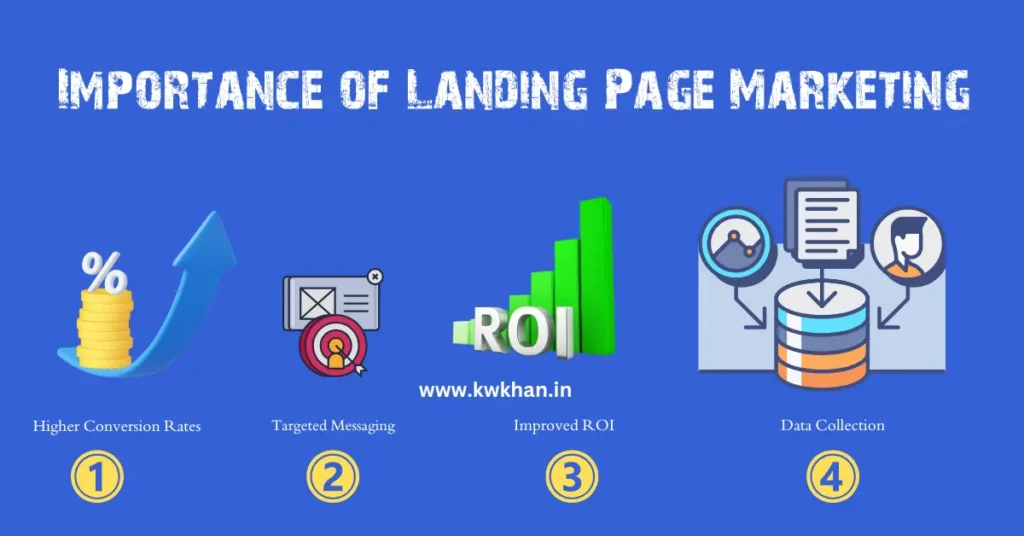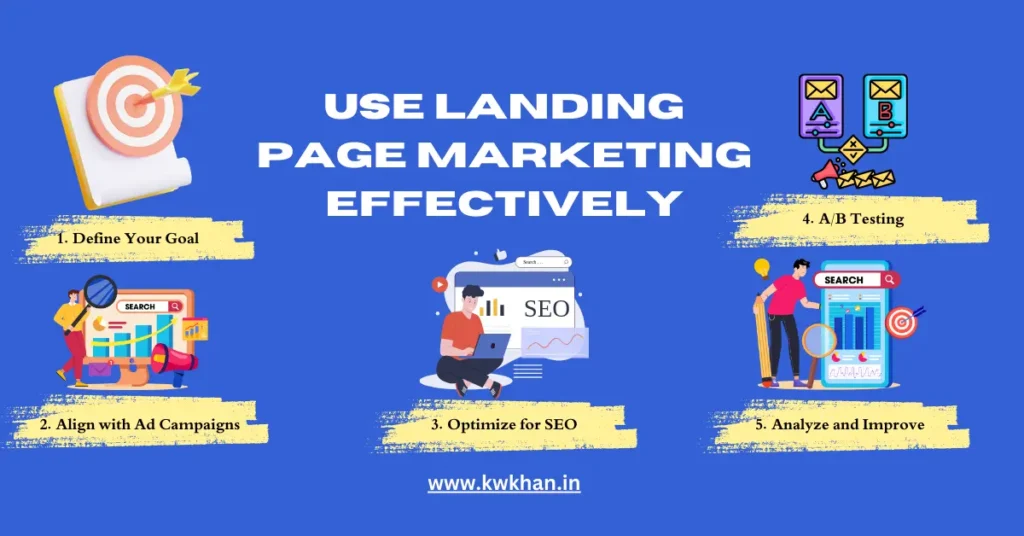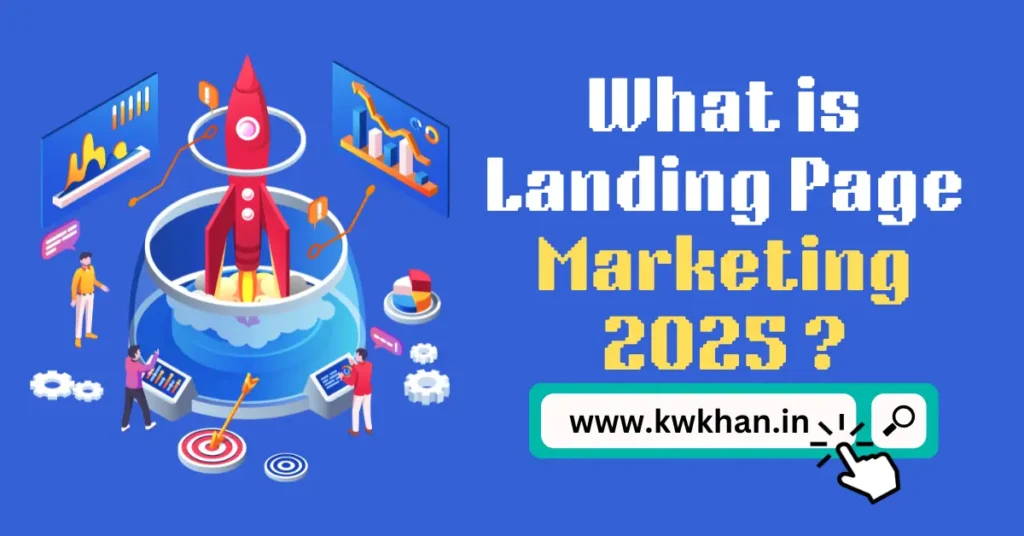Landing page marketing is a powerful strategy for businesses to convert visitors into leads or customers by directing them to a focused and purpose-driven web page. In this article, we will explore what landing page marketing is, its importance, how to create effective landing pages, and best practices to maximize conversions. This guide ensures there are no doubts left for the user.
What is Landing Page Marketing?
Landing page marketing involves creating dedicated web pages designed to achieve a specific goal, such as generating leads, promoting a product, or encouraging sign-ups. These pages are separate from your main website and are built with a single call-to-action (CTA) to minimize distractions.
A landing page is not just another page on your website; it is a strategically designed page that works as a conversion tool. For example, if your goal is to increase newsletter subscriptions, the landing page will focus solely on that objective without additional links or navigation that could distract the visitor.
Importance of Landing Page Marketing

Higher Conversion Rates: Landing pages are optimized to guide visitors towards taking a specific action, making them more effective than generic web pages. A well-designed landing page eliminates unnecessary distractions and focuses entirely on the user’s next step.
Targeted Messaging: By tailoring content to specific audience segments, landing pages can address unique needs and pain points. For example, a landing page promoting a fitness app can focus on features like step tracking for health enthusiasts.
Improved ROI: Effective landing pages enhance the return on investment (ROI) of marketing campaigns by maximizing the value of each visitor. When your marketing budget is directed towards pages that convert, every dollar spent becomes more impactful.
Data Collection: Landing pages often include forms that help collect valuable user data for future marketing efforts. This data can be used to personalize future campaigns, making them even more effective.
Key Elements of a Successful Landing Page
To excel in landing page marketing, you must ensure that your page includes the following elements:
1. Compelling Headline
Your headline is the first thing visitors see, so it must grab attention and clearly communicate the value of your offering. For example, “Boost Your Sales with Our Proven Strategies!” A strong headline sets the tone and assures users they are in the right place.
2. Engaging Visuals
Use high-quality images, videos, or graphics to make your page visually appealing and enhance user experience. Visuals not only attract attention but also help convey messages quickly. For instance, an explainer video about your product can clarify its benefits better than text alone.
3. Clear Call-to-Action (CTA)
Your CTA is the most critical element on the page. It should stand out and clearly guide users on what to do next, such as “Sign Up Now” or “Get Your Free Ebook.” Use contrasting colors and persuasive language to make your CTA irresistible.
4. Concise and Persuasive Copy
Keep the text focused on the benefits of your offer. Avoid unnecessary details that may overwhelm users. For example, instead of saying, “Our software has multiple features,” specify, “Our software saves you 10 hours a week by automating tasks.”
5. Mobile Responsiveness
Ensure your landing page looks great and functions smoothly on all devices, especially smartphones. With a significant portion of traffic coming from mobile users, a responsive design is non-negotiable.
6. Trust Elements
Include testimonials, reviews, or certifications to build trust and credibility. A simple “Rated 5 stars by 1,000+ customers” can significantly impact user confidence.
7. User-Friendly Forms
Simplify the form-filling process by asking for only essential information, such as name and email address. Lengthy forms can deter users; stick to the basics to encourage submissions.
How to Use Landing Page Marketing Effectively

1. Define Your Goal
Clearly outline what you want to achieve with your landing page. Is it lead generation, sales, or webinar registration? Defining the goal helps you create a focused and effective design.
2. Align with Ad Campaigns
Ensure your landing page matches the messaging and visuals of your ads for a seamless user experience. For example, if your ad promotes a free guide, the landing page should highlight the guide prominently.
3. Optimize for SEO
Incorporate relevant keywords, including “landing page marketing,” to improve visibility in search engine results. Use keyword-rich titles, meta descriptions, and alt text for images.
4. A/B Testing
Experiment with different headlines, visuals, and CTAs to identify what resonates most with your audience. A/B testing allows you to make data-driven decisions for optimal performance.
5. Analyze and Improve
Use analytics tools to track performance metrics like conversion rate, bounce rate, and user behavior. Continuously optimize based on the data to improve results.
Benefits of Landing Page Marketing
Increased Lead Generation: Effective landing pages capture user information, which can be used for nurturing leads. For instance, offering a free resource in exchange for an email address is a common tactic.
Better Campaign Performance: Focused landing pages align with specific marketing goals, driving better results. Whether it’s boosting sales or registrations, targeted pages ensure success.
Enhanced User Experience: A well-designed landing page ensures a smooth journey for visitors, reducing friction and increasing satisfaction.
Scalability: Landing pages can be created for various campaigns, products, or audience segments, making them versatile marketing tools.
Common Mistakes to Avoid
Cluttered Design: Overloading your page with information or visuals can distract visitors. Keep the layout clean and focused.
Weak CTAs: Ambiguous or unnoticeable CTAs fail to drive action. Ensure your CTA is prominent and persuasive.
Slow Loading Speed: Pages that take too long to load risk losing potential leads. Use optimization tools to improve load times.
Ignoring Mobile Users: A non-responsive design can alienate a large portion of your audience. Test your page on multiple devices to ensure functionality.
Examples of Landing Page Marketing
Ebook Download: A page offering a free ebook in exchange for an email address. The headline might say, “Download Your Free Guide to Success!”
Product Launch: A page showcasing a new product with a pre-order option. Include high-quality images and a countdown timer to build excitement.
Webinar Registration: A page inviting users to sign up for an upcoming webinar. Highlight the benefits of attending the webinar.
Limited-Time Offers: A page promoting a discount or special deal. Use urgency-inducing language like “Offer Ends Soon!”
Tools for Creating Landing Pages
Unbounce: A drag-and-drop builder for creating high-converting landing pages.
Instapage: Offers customizable templates and A/B testing features.
Leadpages: Ideal for small businesses looking for simplicity and effectiveness.
ClickFunnels: Perfect for building sales funnels with integrated landing pages.
WordPress Plugins: Tools like Elementor or Divi can help create stunning landing pages.
Conclusion
Landing page marketing is a vital component of any digital marketing strategy. By creating focused, high-quality landing pages, you can significantly improve conversions, enhance user experience, and achieve your business goals. Following the strategies and best practices outlined in this guide will ensure your campaigns are successful.
Remember, consistency, analysis, and optimization are key to mastering landing page marketing. Begin your journey today and unlock the full potential of your marketing efforts.

2 thoughts on “Landing Page Marketing: A Complete Guide (2025)”
Thanks , I’ve recently been searching for info approximately this subject for ages and yours is the best I’ve found out so far. But, what about the bottom line? Are you sure about the supply?